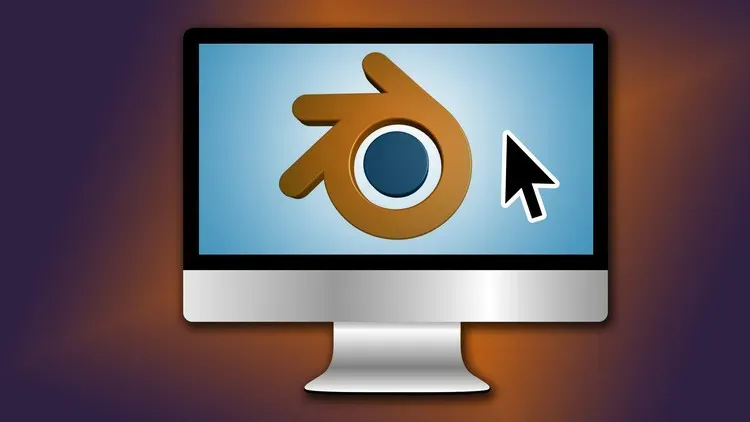
Learn 3D Modeling: Blender Basics in Under 2 Hours

This course provides an introduction to 3D modeling with Blender, a powerful open-source software. In just two hours, participants will gain the skills needed to create 3D models.▼
Course Feature
![]() Cost:
Cost:
Free
![]() Provider:
Provider:
Udemy
![]() Certificate:
Certificate:
Paid Certification
![]() Language:
Language:
English
![]() Start Date:
Start Date:
Self Paced
Course Overview
❗The content presented here is sourced directly from Udemy platform. For comprehensive course details, including enrollment information, simply click on the 'Go to class' link on our website.
Updated in [April 29th, 2023]
This course provides an introduction to 3D modeling using Blender. In under two hours, students will learn the basics of the Blender interface, how to use the fundamental tools, shortcuts, and simple objects. By the end of the course, students will have a better understanding of the Blender software and be able to use it with considerably more confidence.
[Applications]
After taking this course, students should be able to apply their knowledge of 3D Modeling: Blender Basics to create 3D models for a variety of applications. They should be able to use the Blender interface to navigate the software, use the fundamental tools, shortcuts, and simple objects to create 3D models, and have a greater understanding of the Blender software. With this knowledge, students should be able to create 3D models for video games, movies, animations, and more.
[Career Paths]
1. 3D Modeler: 3D Modelers use 3D modeling software such as Blender to create 3D models for use in video games, movies, and other media. They are responsible for creating the models, textures, and animations that bring characters and environments to life. As 3D technology continues to evolve, 3D Modelers are in high demand and the job outlook is expected to remain strong.
2. 3D Animator: 3D Animators use 3D modeling software such as Blender to create animations for video games, movies, and other media. They are responsible for creating the movements, textures, and effects that bring characters and environments to life. As 3D technology continues to evolve, 3D Animators are in high demand and the job outlook is expected to remain strong.
3. 3D Visual Effects Artist: 3D Visual Effects Artists use 3D modeling software such as Blender to create visual effects for video games, movies, and other media. They are responsible for creating the effects, textures, and animations that bring characters and environments to life. As 3D technology continues to evolve, 3D Visual Effects Artists are in high demand and the job outlook is expected to remain strong.
4. 3D Game Developer: 3D Game Developers use 3D modeling software such as Blender to create video games. They are responsible for creating the models, textures, and animations that bring characters and environments to life. As 3D technology continues to evolve, 3D Game Developers are in high demand and the job outlook is expected to remain strong.
[Education Paths]
1. Bachelor of Science in Computer Science: This degree path focuses on the fundamentals of computer science, including programming, software engineering, and computer architecture. It also covers topics such as artificial intelligence, computer graphics, and computer networks. With the increasing demand for 3D modeling, this degree path is becoming increasingly popular and is a great way to gain the skills needed to become a 3D modeler.
2. Bachelor of Science in Animation and Visual Effects: This degree path focuses on the fundamentals of animation and visual effects, including 3D modeling, texturing, lighting, and rendering. It also covers topics such as motion graphics, character design, and storyboarding. With the increasing demand for 3D modeling, this degree path is becoming increasingly popular and is a great way to gain the skills needed to become a 3D modeler.
3. Bachelor of Science in Game Design: This degree path focuses on the fundamentals of game design, including game mechanics, level design, and game programming. It also covers topics such as game art, game audio, and game production. With the increasing demand for 3D modeling, this degree path is becoming increasingly popular and is a great way to gain the skills needed to become a 3D modeler.
4. Bachelor of Science in Digital Media: This degree path focuses on the fundamentals of digital media, including web design, digital video, and digital audio. It also covers topics such as interactive media, digital photography, and digital marketing. With the increasing demand for 3D modeling, this degree path is becoming increasingly popular and is a great way to gain the skills needed to become a 3D modeler.
Pros & Cons
-

Quick walkthrough of Blender interface.
-

Explains clearly and concisely.
-

Gets straight to the point.
-

Easy to understand and stick.
-

Keyboard shortcuts not announced.
-

Refers to older version of Blender.
-

Layout is different in current version.
-

No pdf with shortcuts/commands.
Course Provider






